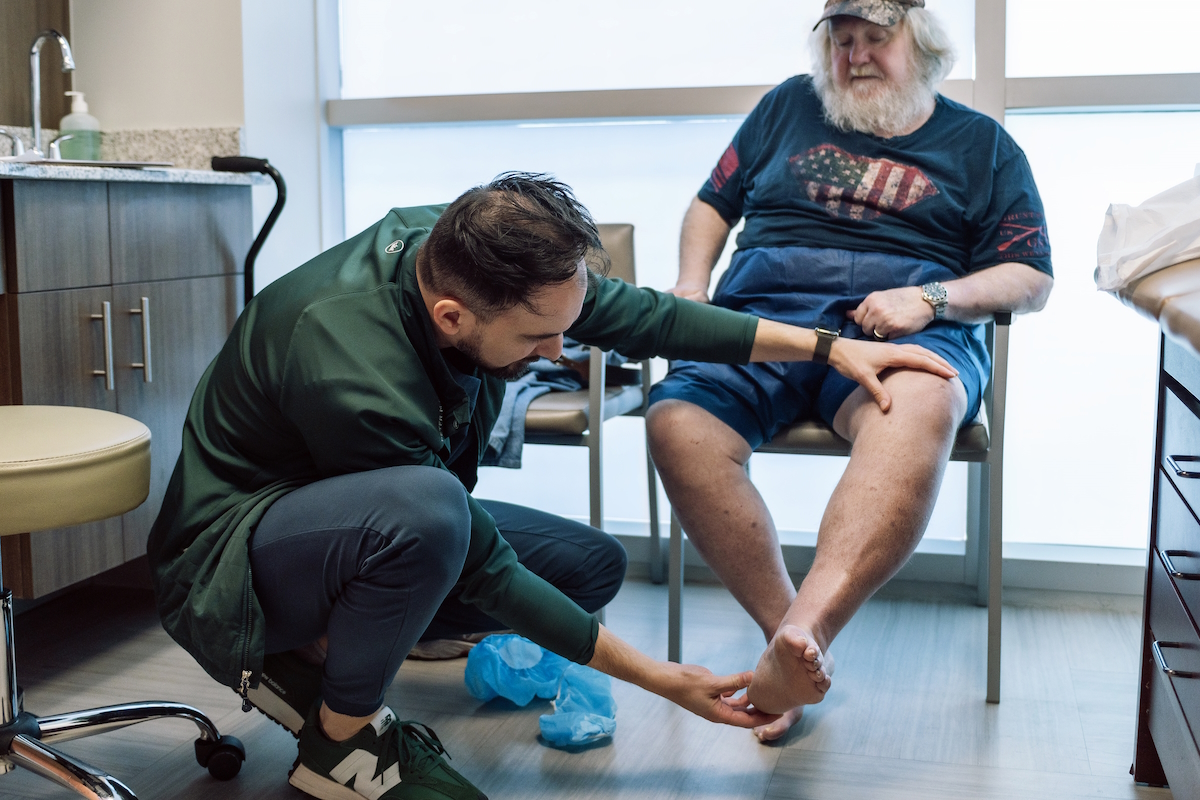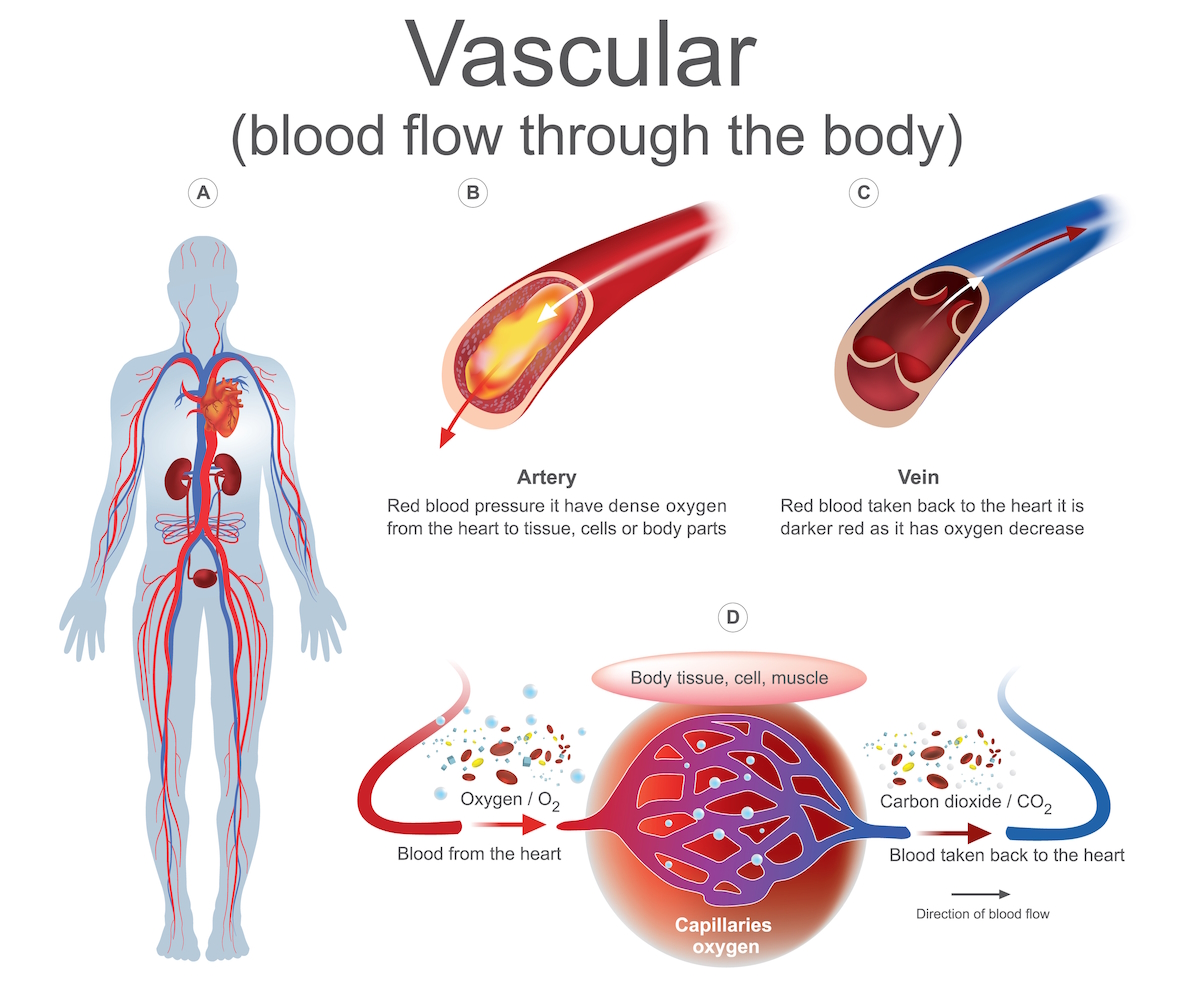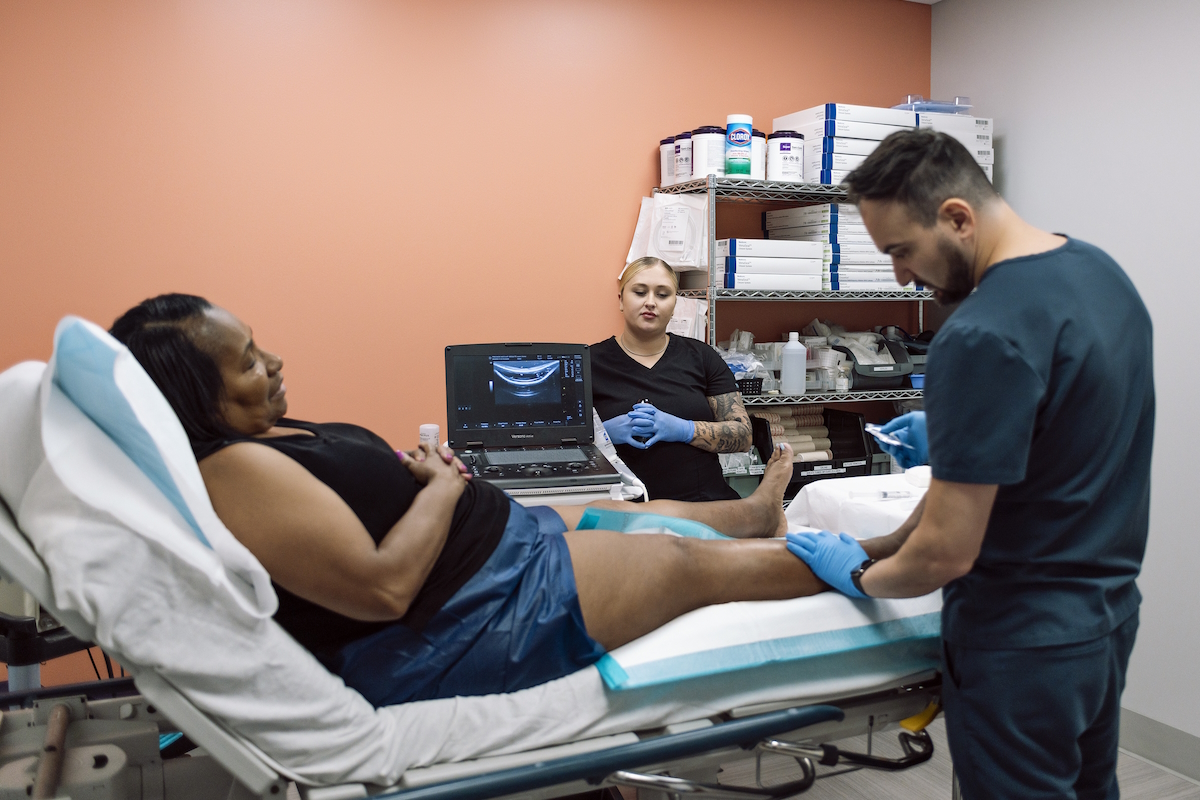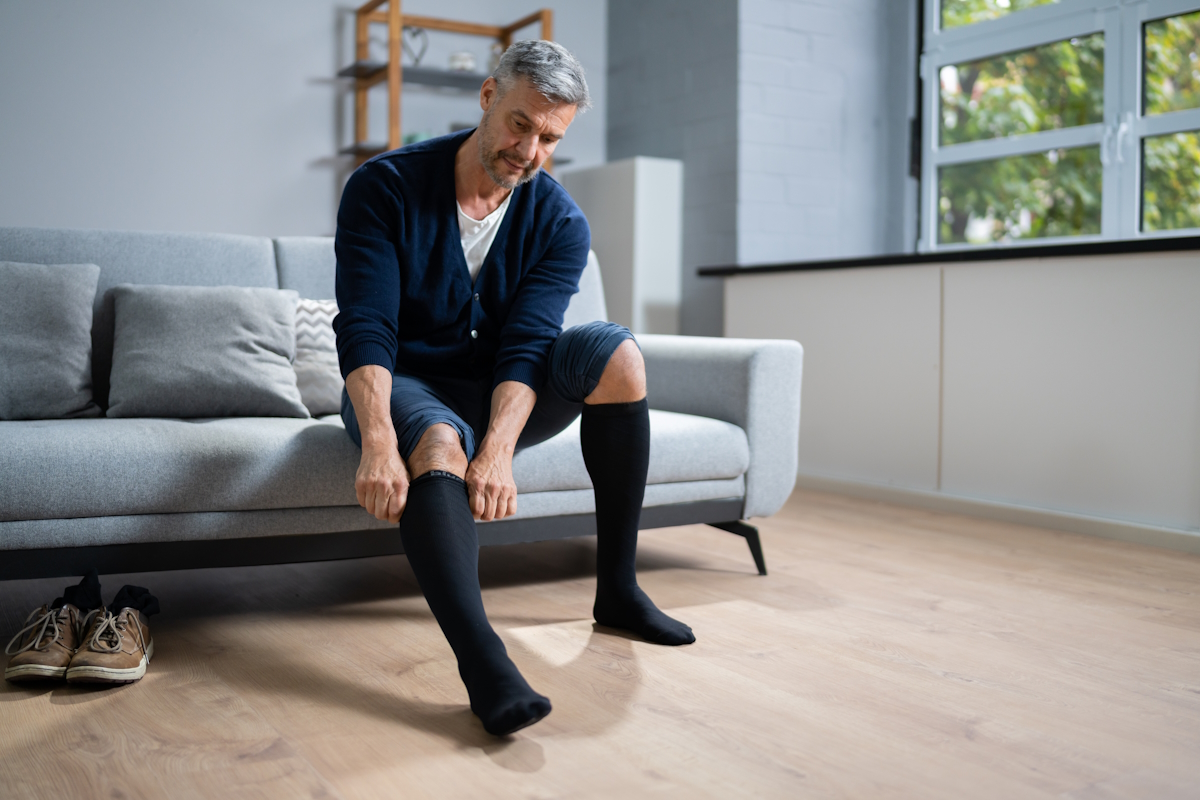Why Is My Doctor Referring Me To a Vascular Surgeon?
Author: StrideCare Internal Team

Ron* did not think much about his tired legs and feet. After all, everyone feels run down and sluggish from time to time, especially after sitting or standing for too long, long exercise sessions, or even ill-fitting shoes. The problem in Ron’s case was that he could not point to anything specific as the culprit. On top of that, the sensation of weakness and fatigue would not go away. It felt like he was walking around in quicksand, even while hanging out with his grandchildren at the park and making quick trips to the store. At his wit’s end, he finally visited his primary care provider, who, after a brief evaluation, opted to refer Ron to a vascular surgeon. Ron trusted his doctor yet could not help but question why he was being referred to someone else.
The first thing to realize is that visiting a vascular surgeon is a good thing. While tired legs and feet are not always a cause for concern, conditions like Ron’s are often telltale symptoms of vein disease and poor blood circulation. In fact, an average of one in every three adults over age 45 develops some form of vein disease without realizing it. A vascular surgeon is a highly trained physician who understands the vast network of veins and arteries in your body, and their job is to uncover and treat the root cause rather than focusing on symptoms alone.
Vein disease is treatable, and many people can go on to lead a normal life. However, it is important to recognize some of the early warning signs that could lead to more complex conditions if left unchecked.
Do These Symptoms of Vein Disease Sound Familiar?
- Unsightly and perhaps painful varicose veins
- Itchy spider veins
- Legs that are difficult to lift and move forward
- Fatigue, stiffness, and lack of mobility
- Unpleasant sensation of pain and heaviness
- Tingling, prickling, and pulling sensations
- Muscle cramps
- Leg swelling
- Burning sensations
- Open sores on legs or feet that do not heal
- Numbness in the legs and feet
Are you suffering from any of the symptoms above? Schedule a consultation with a StrideCare vascular doctor today. Our collaborative approach ensures you receive the care you need.
How Is a Vascular Surgeon Different from Your Primary Doctor?
Your primary doctor can help resolve many conditions that drag us down in our daily lives. However, they may defer to a specialist occasionally. This is especially true if you see your regular doctor for leg pain and there is a genuine concern for venous insufficiency, blood clot, or peripheral arterial disease. You may also be referred to a vascular surgeon if you are in a high-risk category: smoker, diabetic, overweight, and/or if you have high blood pressure.
According to the Society for Vascular Surgery, a vascular surgeon is a highly trained physician specializing in diagnosing, treating, and managing diseases of the vascular system (the arteries, veins, and lymphatic vessels throughout the body). As we age, the valves in our veins weaken and do not work like they did when we were younger. They slow down, fill up with blood, and cause our veins to enlarge or swell due to fluid buildup. This process can lead to a traffic jam in your circulatory system that prevents blood flow to any part of the body.

If left unchecked, a patient may experience pain while performing everyday tasks such as walking, exercising, or even gardening. Eventually, this can lead to another prominent vascular disorder, such as one of the following.
- Deep Vein Thrombosis — DVT is a life-threatening condition where blood clots form in one of the veins deep within your body. One-sided swelling may indicate a blood clot. One common complication of DVT is known as post-thrombotic syndrome, and the most severe cases can lead to the formation of chronic wounds.
- Peripheral Arterial Disease — PAD affects 8.5 million U.S. adults and 113 million people worldwide. When this plaque is allowed to build up in the major blood vessels, it creates narrower openings for blood and oxygen to pass through and too much restricted blood flow or a complete blockage to the extremities.
- Venous Insufficiency — When vein valves no longer hold a seal, the result is poor blood flow from your leg veins back to your heart. This causes leg swelling, varicose veins, cramps, skin changes, and leg and foot ulcers.
- Restless Leg Syndrome — RLS happens when blood does not properly empty out of the legs. It is most associated with lower leg tingling, prickling, tingling, and pulling sensations that can vary from a mild annoyance to something that interrupts one’s ability to sleep and lead a normal, active lifestyle.
You do not have to suffer from vein disease. Schedule a consultation with StrideCare’s expert physicians at one of our vein clinics near you
Does Seeing a Vascular Surgeon Mean I Must Have Surgery?
The short answer is no. A vascular surgeon can perform surgery to fix vein disease issues, but many vascular issues can be treated with medication, lifestyle changes, and minimally invasive interventions. The bottom line is that you have options. Vascular surgeons have access to ultrasound imaging machines that can uncover precisely why you are experiencing pain in your lower extremities and help determine the best treatment option to improve blood flow. Early detection is vital in treating any vein disease, allowing vascular surgeons to tailor treatment plans to your unique needs.

A few treatment options a vascular surgeon may rely on to resolve your vein issues can include the following:
Radiofrequency ablation
Under ultrasound guidance, a thin catheter is inserted into the diseased vein and guided up into the great saphenous vein in the thigh or the small saphenous vein in the calf. The radiofrequency energy is delivered to the inside of the vein, cutting off blood flow and relieving symptoms.
Microfoam ablation
A special microfoam is injected into your affected veins to relieve symptoms without heat or tumescent. The foam fills the desired section of the vein, and the diseased vein collapses. Blood flow then shifts to healthier veins nearby.
Sclerotherapy
Specialists inject a small amount of a specially formulated chemical solution full of sclerosing agents into the affected veins to reduce pain and discomfort caused by the enlargement or swelling of the veins. This solution irritates the vein walls and causes the vein to collapse and disappear.
What Can I Do To Improve My Vein Disease Symptoms?
The good news is that while vein disease is progressive, it is also treatable. Below are 6 helpful tips to avoid vein disease.

- Compression socks — Compression socks apply gentle pressure to support your legs. This helps with circulation, swelling, and reduces painful legs during long work shifts, plane flights, and standing on your feet for a long time.
- Get more exercise — For adults, the American Heart Association recommends at least 150 minutes per week of moderate-intensity aerobic activity and increasing the amount and intensity of those exercises gradually over time. This improves blood flow throughout the body and promotes healthy veins.
- Elevate your legs — Studies consistently show that elevating legs for 30 minutes at least four times a day can decompress lower extremity veins and improve symptoms of painful legs. Elevating legs uses gravity to your advantage by allowing blood that has pooled in your extremities to drain away.
- Avoid tight clothing — Tight clothing around the waist, upper thighs, and legs can interrupt blood flow through the veins and increase pooling of blood and leg swelling.
- Quit smoking — Smoking is the leading cause of preventable disease and death in the United States, including its direct impact on the formation of varicose veins and other venous diseases and complications.
- Eat better — Your diet helps maintain blood circulation, cardiovascular health, and the ability to lose weight. Options include vegetables, fruits, and fiber-rich foods.

If these solutions do not work, or your condition is advanced, your vascular surgeon may suggest minimally invasive treatment options such as the ones mentioned above.
Trust StrideCare When You Need a Vascular Surgeon
Vein disease does not cure itself, and there is no way to prevent it completely. Therefore, it is important to recognize vein disease in its earliest stages and seek help from a vascular surgeon immediately. Yes, it is a good thing that your primary care physician has referred you to us, and no, this does not mean you will need surgery.
StrideCare has long been a leader in multi-specialty care for treating lower-extremity vascular and podiatric conditions. That includes our ability to perform leading-edge procedures to treat artery and vein disease and symptoms that, while minor in their earliest stages, can eventually lead to more serious and life-interrupting issues. The experts at StrideCare will recommend an individualized plan to help you get the best results.
Please contact us at 866-552-4866 or complete the appointment form to schedule a consultation. We are here to help, all while providing compassionate patient care.
Prior to starting any new treatment or questions regarding a medical condition, always seek the advice of your doctor or other qualified health provider. This information is not a substitute for professional medical advice.
StrideCare serves North Texas and South Texas communities, including San Antonio, Stone Oak, Austin, Round Rock, Bastrop, Brushy Creek, Cedar Park, Converse, Georgetown, Hutto, Kyle, Leander, Marble Falls, New Braunfels, Pasadena, Pearland, Pflugerville, San Marcos, Schertz, Bay City, Universal City, Spring, Kingwood, Stafford, Conroe, Texas City, Cypress, League City, Bellaire, Dallas, Mesquite, Addison, Arlington, Plano, McKinney, Craig Ranch, Prosper, Flower Mound, Euless, Southlake, South Dallas, Herman, Irving, Garland, Carrollton, Rowlett, Coppell, Forney, Rockwall, Houston, Sugar Land, Katy, Webster, Clear Lake, The Woodlands, Lake Jackson, and more.
*Patient names and/or photos may be changed to protect patient confidentiality.


